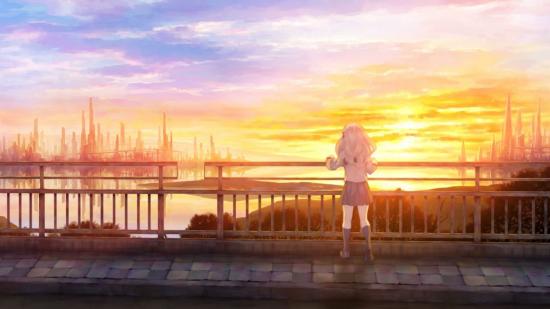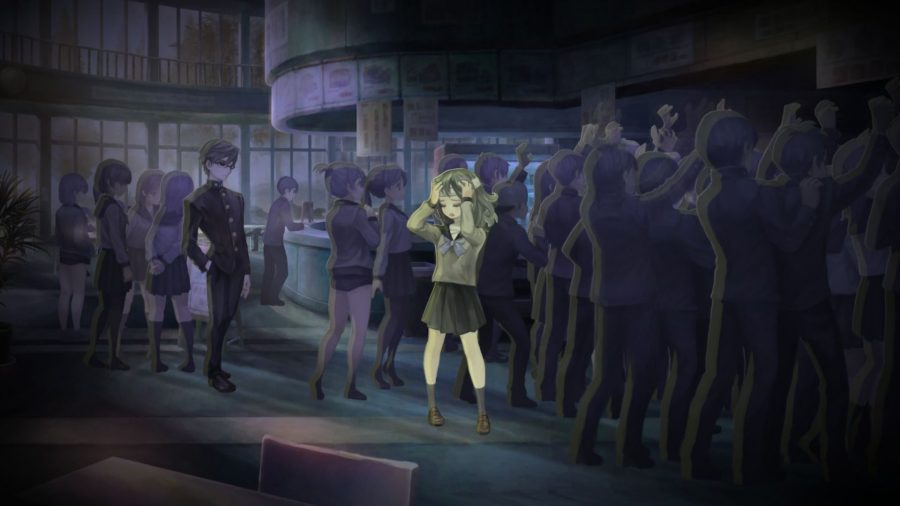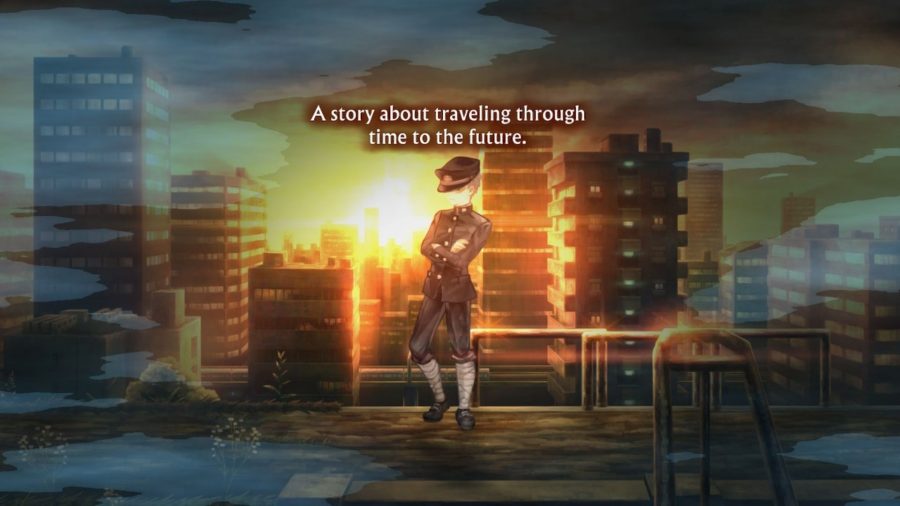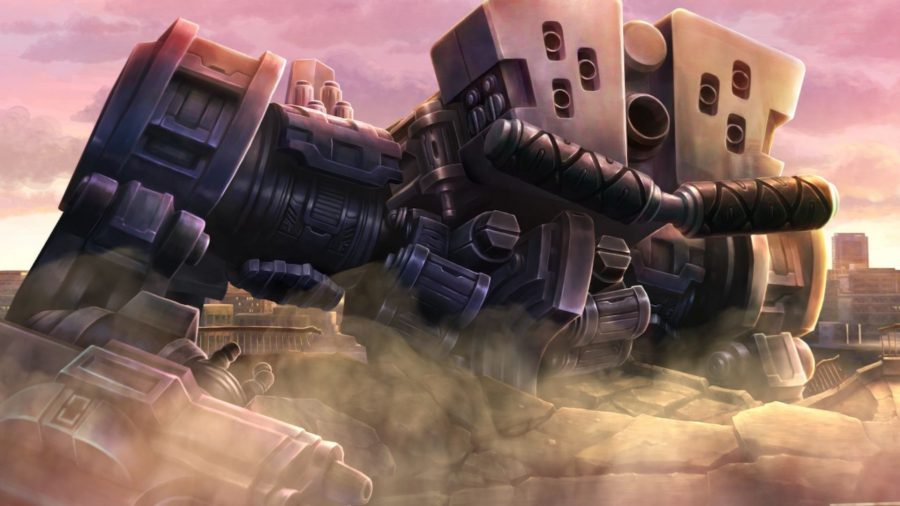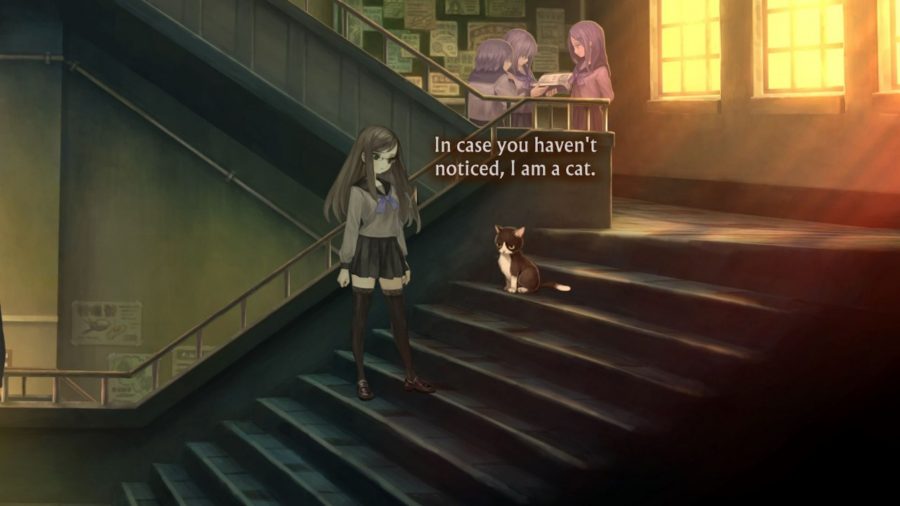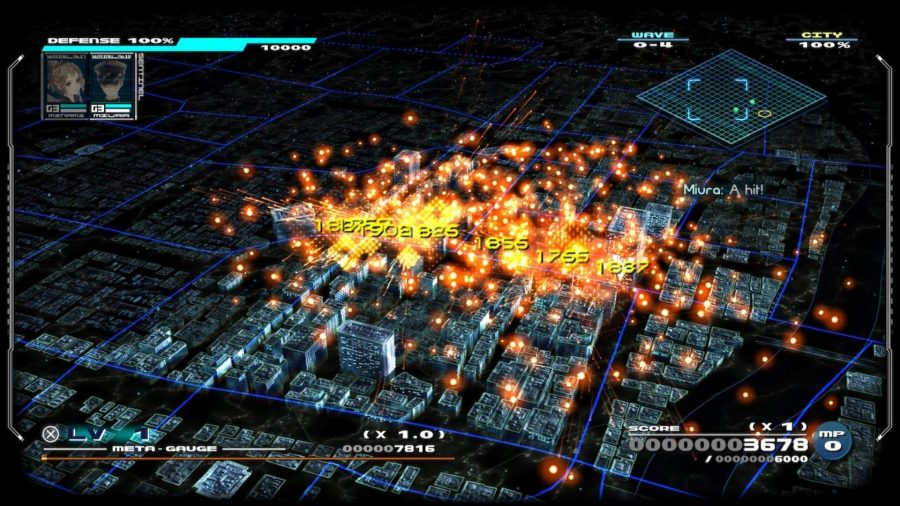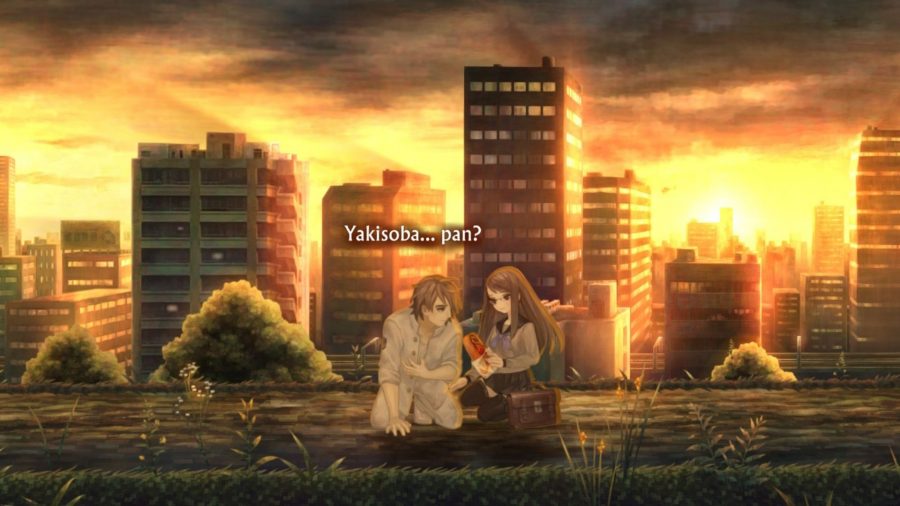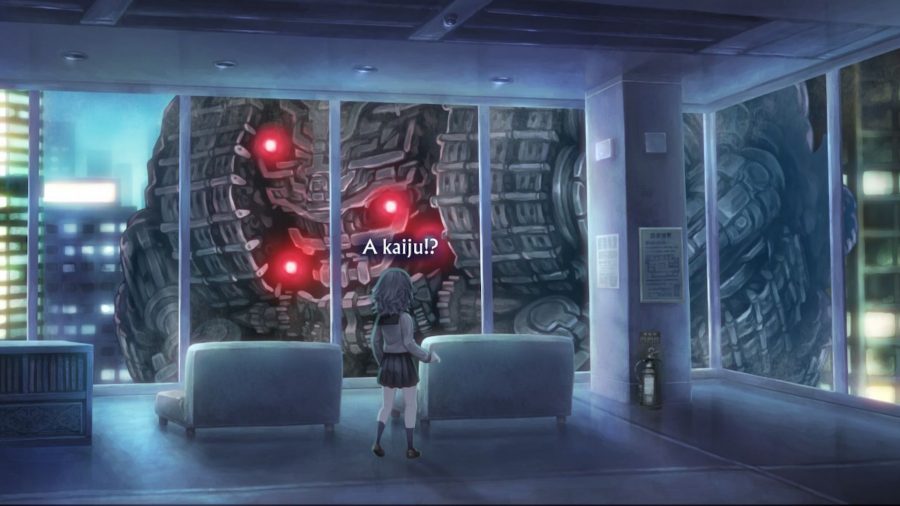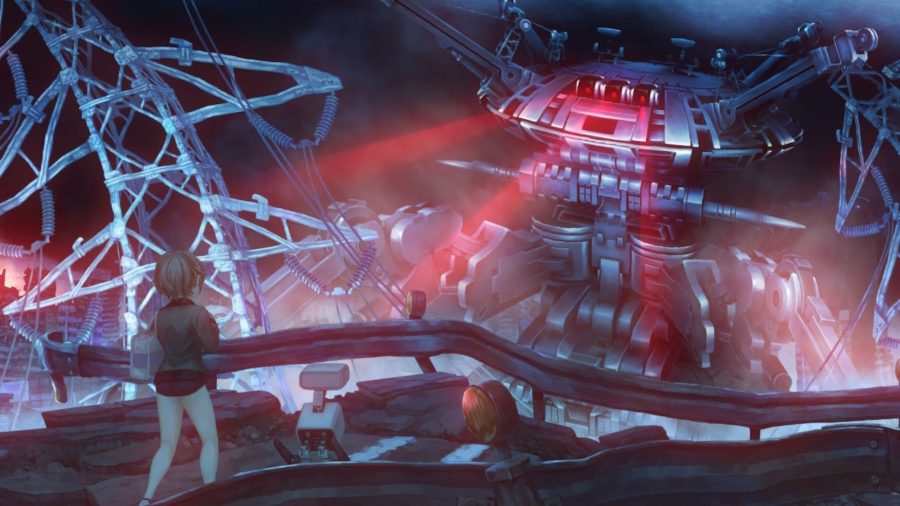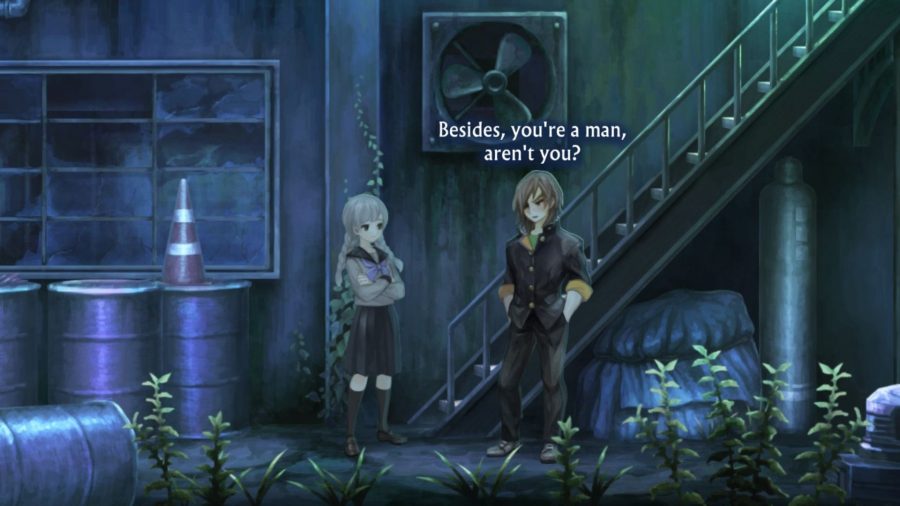Our Verdict
13 Sentinels barely puts a foot wrong throughout its story. It has lofty ambitions that can become a mess of strange terms, but it never forgets its characters and themes. It loudly reminds you of the violence and destruction to come with the RTS mech combat one moment, then lets you see a character quietly consider the ramifications of everything they learn the next. It has such breadth, not just of ideas, but also of emotion.
It can be a little difficult to pin down your thoughts on something that’s quite out-there. I got pretty obsessed with strange stuff when I was younger, unblinkingly, deciding it was good on the basis that it was trying to be different. Now, though, that’s not really enough. I ought to pin something down, especially if I’m reviewing it. So, when it comes to 13 Sentinels: Aegis Rim, do I like just because it’s trying, just because it’s so bold? Or is it actually good at achieving what it sets out to do? Well, maybe, let’s find out.
But first, the easy stuff. 13 Sentinels: Aegis Rim is a light adventure game, acting more like a visual novel, with a real-time strategy mech fighting minigame bolted on. The former involves thirteen characters, all at Sakura High School. In the prologue, you witness a handful of them and their stories. You find out who they are, and also get a sense of the strange things that are afoot.
The latter, the RTS combat, also involves these thirteen characters. You have a chance to get to grips with the way it works in the prologue, before being let loose with the full game. This prologue lasts around three hours and introduces you to every element you need to know about 13 Sentinels. But it doesn’t prepare you for just how much stuff there actually is.
The first notes I wrote about the game were all about the presentation. From the outset, the sound design is excellent, whether it’s the chatter of a school hallway or the rustling leaves in a park. There’s also a genuinely perfect user interface, which makes the game very easy to work with. One place these two elements mesh perfectly is in the thought cloud.
The thought cloud is a menu, unique to each individual character, that contains details on things specific to them – a certain person they fancy or a film they like. This develops as the game goes on, of course, working as an excellent reminder of the many moving parts of the story, but also as a way to interact with other characters. You could talk to a character, unsure where the conversation is going, open the thought cloud, and instead of pressing X to consider the subject, use A to talk to the other person about it. It made me feel like I had a full understanding of these characters throughout, and gives the illusion of control, even though the items in the thought cloud I could use to interact with others were clearly pre-ordained.
The thought cloud is an excellent introduction to 13 Sentinels, as it holds within it a hint of everything to come. In terms of presentation, you can hear mumbled thoughts scatter around the audio in the thought cloud, barely-there noises giving the whole place an atmosphere. The different topics in the menu also interact with the outside world, with a literal line drawn from the subject in the thought cloud to the character that you can talk to about the subject, making everything visually clear. It’s so simple, but instantly effective, like most of the rest of the game
But, the real reason the thought cloud is so good, is because it suggests to you how much there is to the story. You open it and see a couple of options, but there’s loads of space left. Surely it’s going to fill up? Well, yes, it does fill up. The game hints at what’s to come enough for you to be intrigued. And, what is to come is the reason to play 13 Sentinels – the cavalcade that is the story and its characters.
There are thirteen characters. They all go – or went – to Sakura High School. Some of them are friends, some of them barely know each other. It’s the 1980s, and the first character you meet, Juro Kurabe, is a polite, well-mannered kid, obsessed with sci-fi movies. He and Iori Fuyusaka (who I keep calling Shiori Fujisaki in my head) keep having the same dreams. They see each other in their dreams. Dreams of giant mechs fighting with kaiju. Someone’s been watching too many sci-fi movies.
There’s not much else to say about the story in 13 Sentinels. There’s a lot to it, and it’s masterfully constructed. The key element is the thirteen characters. You can choose which character’s story to see and when. You can construct the story how you want to. Each story chapter is around ten minutes long, making the game easy to engage with. I found myself blasting through it, enamoured by the storytelling, always wanting to know what happens next. But if you want to, you can treat each chapter as an episode of television, and just watch it on the commute, which means it’s perfect for the Switch.
The storytelling is impressive in a myriad of ways. You could spend some time with Nenji Ogata, a punk always ready for a fight, and notice two girls having a chat in the background. An hour later, you could then be in that exact same scene but through the eyes of one of those girls. Seeing every vignette from all the different angles is thrilling. You feel like you’re picking apart the spider’s web of interlocking characters and storylines, and that every discovery is your own. Of course, it’s meticulously constructed, but in a way that makes you feel like you’re in charge.
The game doesn’t let you just plough through one character’s story, though. If you find Iori Fuyusaka’s story especially engaging, you can only go so far before the game locks you out, forcing you to complete other elements of the game, whether it be other characters’ stories or some waves of kaiju attacks in the RTS mode. This never feels that restrictive – there’s still a good amount of player choice even when the game puts locks on certain aspects – but it does ensure that the story unfolds in the optimal way. Some story moments are massively powerful and dramatic, but only because of what you learn in other parts of the story. It all meshes together, allowing every part to support the other. It’s endlessly fascinating.
So, once you play a good chunk of the story, it becomes apparent that you’re going to have to get some of the RTS mech battles done. I was so obsessed with where the story was going that I just ignored the RTS stuff until the game forced me to engage with it. Once I did get into it, I really enjoyed it. You’re dropped into a city, with the thirteen different characters available to put in an offensive team or defensive team. The aim is to stop the invading kaiju from destroying a terminal. The defensive team is automated, surrounding the terminal. The offensive team is where you come in.
There are four different types of mech, all with different abilities. Some are quite slow, but have great damage when up close to an enemy. Some can fly, with great agility and good crowd control. All these mechs have separate upgrade trees, allowing you to customise the set number of abilities they have. Then, you use these abilities to destroy the invading kaiju. Either destroy them all or hold out until the time limit is up and you’re victorious. There are boss waves every five levels, and a difficulty selection, meaning you can put the game in casual mode if you’re only here for the story.
If you look at the screenshot above, you can see that the game has heaps of style. You can’t technically see your mechs or the kaiju. Instead, everything is presented like you’re looking at a tactical analysis screen, with virtual representations of what’s going on. When you attack enemies, they explode like fireworks as damage numbers pop up in yellow. I absolutely adore the way everything is presented. The slickness of 13 Sentinels is everywhere, both in look and feel.
I think it should be commended, and it does add little bits to the story, but the RTS element is not why you play 13 Sentinels. You come for the story, and the RTS mode assists. That’s not to say it’s superfluous. I actually think it’s kind of vital, as it makes sure that the aspect that’s hardest to get across in a visual novel – violent, explosive combat – is felt by the player. In the story, you’re just hanging out with teenagers in school corridors, for the most part. To see the war, you need a different lens. And this works very well.
Performance on the Switch is also excellent. The art style is gorgeous throughout and really pops on the OLED screen. I didn’t notice any issues. Interestingly, I thought that I would only play this in handheld mode, but I spent almost all of my 25-hour playing time in front of the TV. It worked perfectly there too, making the game feel like more of an event. I still think the game fits a different type of audience too, however, with the bite-size chunks of story suited to small, handheld sessions.
So anyway, you’re here for the story. Which makes it quite hard for me to say much. Everything’s a spoiler at the end of the day. Just go experience it. It’s loud sci-fi, and I love every inch of it. There’s time travel, talking robots, digital memories, consciousness takeovers, androids, laser guns, pills, latex jumpsuits, nanomachines, cloning, spaceships, evil corporations, spies, men in black, blackmail, obsession, and, well, pretty much any other sci-fi trope or theme you could imagine. Shu Amiguchi talks to someone through his TV for goodness sake. There’s a heck of a lot of nonsense, and I love it.
The characters evolve through every twist and turn, and I felt so connected to all of them by the end of the game. The story is still a mess of proper nouns and nonsense, and there are more than a handful of plotholes, but it clearly doesn’t matter. The story is a vehicle for the characters. They can seem a little shallow, instantly falling in love with one another. But they’re teenagers! I could fall in love in a split second when I was sixteen. Maybe that says more about me than the game, but still.
The way you interact with the story is all about repetition. Almost every part of Juro Kurabe’s story starts in a classroom, with his buddy, getting ready to leave. Go to a different place, talk to a different person, and trigger a new story event. This could be a flashback that then leads to another flashback, or it could just be a conversation. Each character’s story has its own web, which then intertwines with other characters’ webs. Some of these are pretty straightforward, some are more labyrinthine. All it comes down to is wanting to untie these knots – if you don’t, the repetition will drag. It doesn’t for me.
There are also many, many more subtle aspects of the story. It isn’t just a big brash sci-fi extravaganza. There’s a thoughtful storyline about Hiroshima and Nagasaki, drawing the line between that tragedy and the ensuing Japanese genre of kaiju fiction. There are aspects relating to gender, sexuality, and puberty. There are themes of love and honour, transhumanism and panpsychism. And every single character explores many of these from different perspectives. There’s no one answer, ideology, or outlook on these complex elements of life, just a genuine and heartfelt exploration of it (one that’s often shallow, mind you, but not always).
And this is part of the magic of 13 Sentinels: it does the big and the small equally well. It has lofty – and I mean sky-high lofty – ideas and imagination, utilising so many different sci-fi tropes, serving up a new twist every hour or so, and does so masterfully, unabashedly, without a hint of cynicism. It’s happy to show you a bit of the story that won’t make sense until later, as it meticulously draws connections between everyone involved. It has grand ambitions and succeeds.
Still, when it comes down to it, it’s about some teenagers, how they try to interact with each other, and how they answer the many questions that arise therein. There’s nothing jaded or bitter about it. It’s sweet and open, happy to have questions, happy not to answer them. And it never makes you want an answer. You’re any one of these teenagers, questioning these things alongside them, knowing there isn’t an answer. But the joy is the contemplation. The joy is in the quietness of these thoughts, alongside the loudness of everything that’s actually happening.
And that’s why I can recommend 13 Sentinels wholeheartedly. I wasn’t engulfed by its strange lofty aims like a teenager deciding that anything boldly weird was good. I was swept along by them into a gentle consideration of many things. They drove me beyond amazement and into something different, something quieter. And isn’t that what the best sci-fi stories do? And how many games do that? I don’t know, maybe I just haven’t consumed enough fiction. But I’ve read some sci-fi, and I’ve watched some sci-fi, and I’ve played lots of sci-fi. 13 Sentinels is somewhere near the top of my list, no matter what medium.
